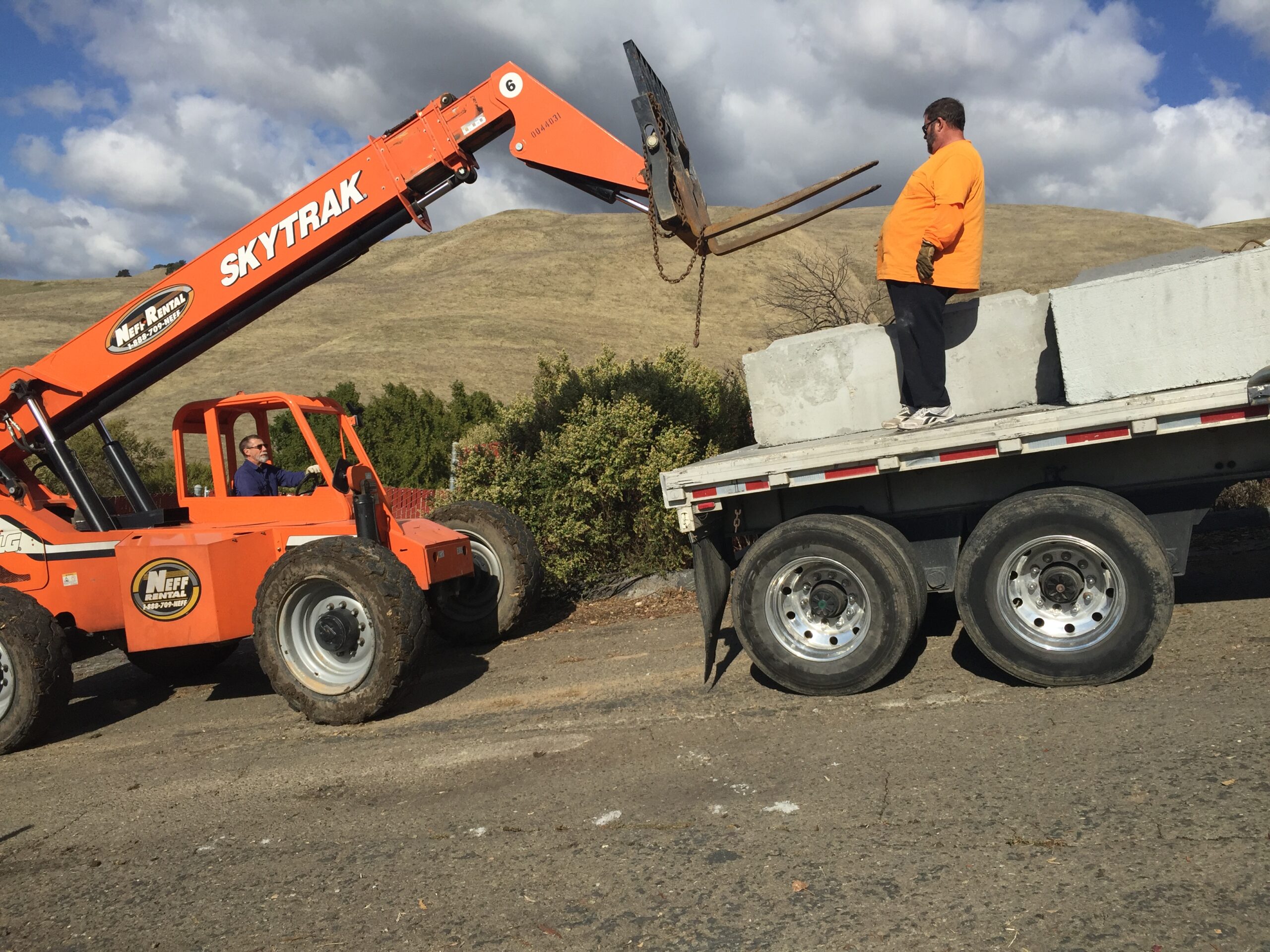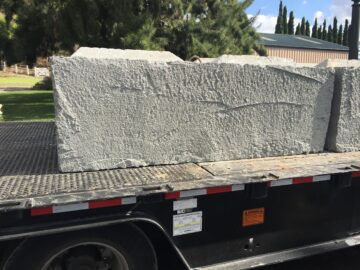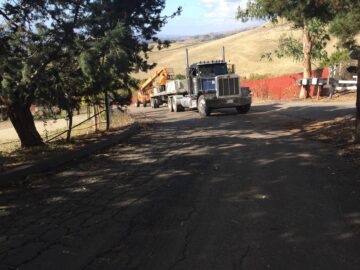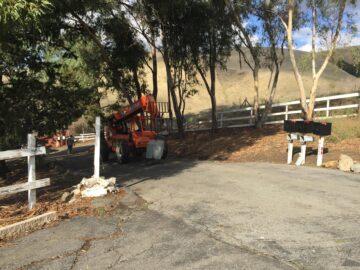To rebuild the wall we ended up purchasing large 6’x6’x2′ blocks from Granite Rock. They, along with United Rentals and All American Rentals, lessened some of the pain caused by the engineering firm that did the design and provided the labor–which is totally separate from the awesome Geotech firm that provided data and guidance for the endeavor. To be honest, the work crew from the general contractors we used were great, but the company’s project management skills were severely lacking. We started the discussions and initial design work in the spring of 2016 and Agent Smith’s father was booked to fly in from Australia on September 21st to handle the excavator. We had a one-month window that we were assured was doable to get the work done, but September rolled around and we still did not have engineered plans. The lead engineer visited our worksite once, spending most of his time taking cellphone pics of the view instead of reviewing the scope. Then when we got initial plans back, they included plans for building the wall out of tiny keystone blocks–the eight- or twelve-inch-wide ones you might use to make a wall with some flower beds behind it. Then there were delays as the engineer sorted out what it would mean using these gargantuan blocks, even though we stated expressly a year earlier–when first discussing the project and at every subsequent meeting–that we wanted to use the beefy concrete blocks as in the first pic below.
Such blocks are made by concrete plants and rockeries when cement trucks return and still have usable (wet) contents. The remainder is poured into forms with some rebar added for structural support. They then cure and are ready for use for all sorts of things. Since the forms can be just about any shape or size, companies can make money off the backend of a project requiring a truck to pump and pour concrete, as they can then sell off blocks easily for things like retaining walls, freeway barriers, ballast and the like.
It was these blocks we used for the wall, but getting them here was not an easy task. Since Purgatory is halfway up a mountain, the 18-wheelers carrying the blocks could only bring twelve to fourteen at a time. On the first day, one of the truckers not only blew past our driveway and continued another 800 feet up the mountain only to have to back himself down, he then managed to lock his maxi brakes and couldn’t get them to release to bring in the blocks (pic 2).
Enter our trusty Australian heavy equipment driver and the telehandler (pic 3). He managed to unload most of the blocks, and thankfully none of our neighbors got upset about a bunch of big concrete blocks sitting on the side of the road for a day.
Once most of the blocks were off the semi, the driver carefully crawled underneath to release some of the pressure and unstick himself. Meanwhile, our operator got busy ferrying a few blocks down the quarter-mile driveway. Shortly after this eventful day our operator flew back home, but as he had already extended his time working for us by almost a month due to the general contractor’s inability to project-manage, I’d say we got our money’s worth out of him.
One side note to this little story: It was at this time I started contacting Google and Apple to report their maps were in error. Our property actually has two addresses. Per the county, we’re off the “low” road and while technically you can reach the house from there, you need to either be a goat or in a four-wheel-drive vehicle, as the old dirt road through the south pasture is not for the faint of heart. Our postal address is off the high road, but GPS units that rely on mapping data had our address about a quarter mile past our driveway, meaning trucks such as these were prone to miss our turnoff. During the wall project we combatted this with our house number in bright orange on a plywood sign. We’ve since replaced that with a very pretty metal sign that has our house number along with those of our nearest neighbors. A few months ago, I finally got confirmation from both Google and Apple that they corrected their mapping data and both our county address and postal address resolve to the correct location. So, progress!





